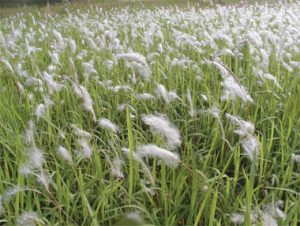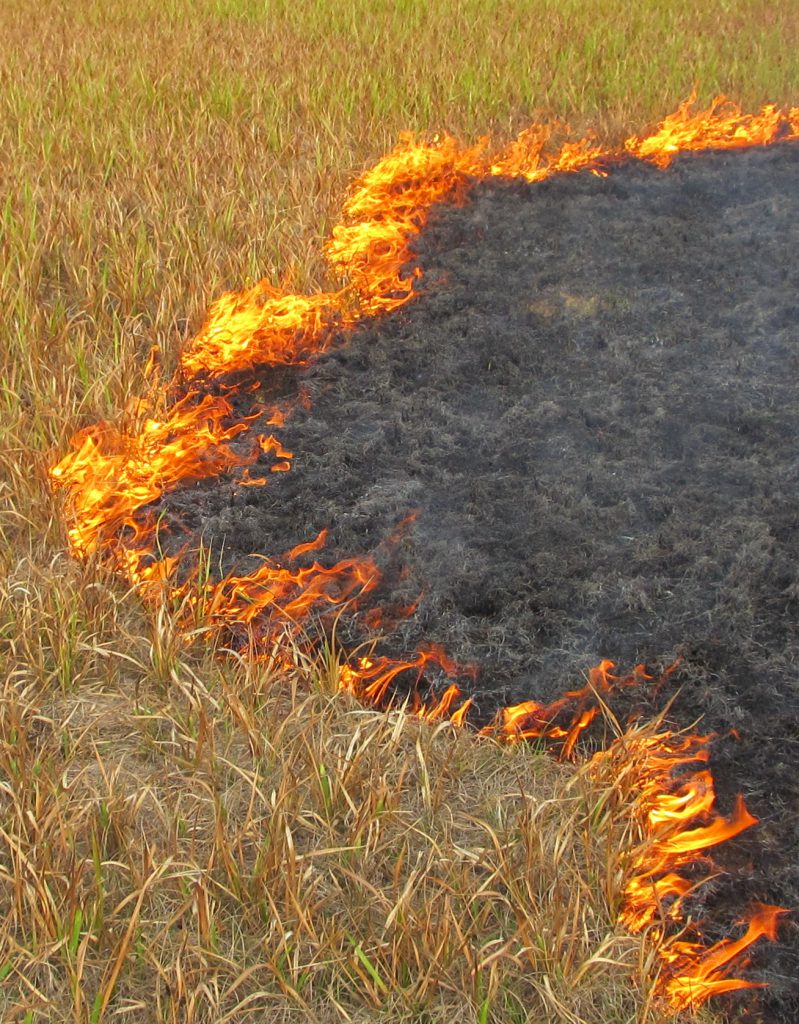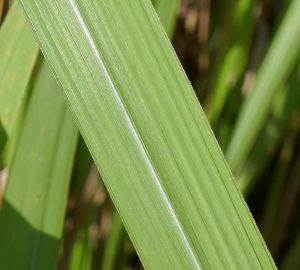
Cogongrass (Imperata cylindrica) is a noxious invasive weed that disrupts ecosystems, decreases property values, and creates increased risk for fires. It originated from Southeast Asia and infests nearly 500 million acres worldwide. It was brought to Florida and tested as a possible forage crop in the 1930s and 1940s by the USDA. Unfortunately, it would prove to be a poor forage crop due to its low palatability, serrated leaf margins, and silica content. It is well adapted to tropical and sub-tropical environments and has spread throughout most of Florida. This invasive weed is commonly found growing in dense patches on land that has been disturbed, upland forests, road sides, pine plantations, abandoned areas, rangelands, pastures, and lawns.
Cogongrass has been designated a “noxious weed”. A noxious weed is any plant designated by a federal, state, or county government as injurious to public health, agriculture, recreation, wildlife, or property. This weed spreads rapidly and can outcompete native vegetation, resulting in ecologically disrupted areas that predominately contain cogongrass. It spreads primarily through rhizomes which are plant stems that grow horizontally underground and send out roots and new shoots.

As the plant grows, the mature blades of grass die and remain on the plant. This increases the plant’s ability to ignite. It burns very hot, killing nearby plants and creating a fire hazard to people and property. After a fire, it quickly recovers and colonizes new areas where competing plants have recently been killed by fire.
 Cogongrass leaves are serrated and have an off-center midrib. Plants may appear yellowish-green, intermixed with brown leaves. The plant is stemless and grows upright.
Cogongrass leaves are serrated and have an off-center midrib. Plants may appear yellowish-green, intermixed with brown leaves. The plant is stemless and grows upright.

As blades of grass mature and die, the dead grass remains along with the new growth. Seed heads emerge throughout spring and release wind-blown seeds.Preventing this weed from spreading onto one’s property can be a challenge because control options may be limited; burning cogongrass may place your property at risk and deep plowing may not be an option. Mowing is not an effective control strategy as most of the plant’s biomass is underground rather than aboveground as vegetation. Glyphosate herbicide kills most plants, including lawns, so judicious application is needed. Multiple herbicide applications are likely to be necessary for control.
Pastures:
Cogongrass easily establishes in pastures and can go unnoticed until large areas have been colonized. Scout regularly and monitor areas adjacent to land that have established stands of cogongrass. This weed aggressively competes with pasture plants and may contaminate hay cuttings. When buying or selling hay check to ensure it does not contain cogongrass. The movement of hay containing cogongrass seeds or rhizomes is illegal and can potentially spread to new fields.
Management:
Cogongrass can be managed if an integrated approach is taken. This means that all available options should be used to effectively control this weed. A key management component is to scout for patches of cogongrass. Preventing further spread to new areas is essential. Cogongrass rhizome segments and seeds can be spread by mowers, farm equipment, vehicles, and hay bales.
The three primary management actions:
1.) Fire: Permitted controlled fires can reduce the vegetation and begin to deplete the underground nutrient reserves within the rhizomes.
2.) Herbicides: Glyphosate, which is sold under many brand names, is a non-selective herbicide that will reduce the biomass of cogongrass. Multiple applications may be necessary to effectively control this weed. Read the herbicide label carefully prior to application.
3.) Deep plowing: Using a disc harrow brings the rhizomes to the surface and works in conjunction with the first two actions. This option is most suited for pasture environments.
In situations where control options are limited the prospects of eradicating this weed become increasingly challenging.
Bring all strategies together:
Ideal application of herbicide is from September to November, followed by burning, deep plowing, waiting for new growth to occur, and repeating this process for two to three years. The combined actions target the rhizome biomass underground; depleting its resources and ultimately killing it. This integrated approach, using all available tools, has proven to be the most effective management strategy for cogongrass.
Helpful publications:
Cogongrass (Imperata cylindrica) Biology, Ecology, and Management in Florida Grazing Lands: http://edis.ifas.ufl.edu/pdffiles/WG/WG20200.pdf
Center for Aquatic and Invasive Plants: http://plants.ifas.ufl.edu/plant-directory/imperata-cylindrica/
Cogongrass: One Scary Weed: www.freshfromflorida.com/content/download/29973/754582/Cogongrass_OneScaryWeed.pdf
Cogongrass – Why Should I Care?https://www.freshfromflorida.com/content/download/4588/29298/Cogongrass_Why_Care.pdf
 1
1
